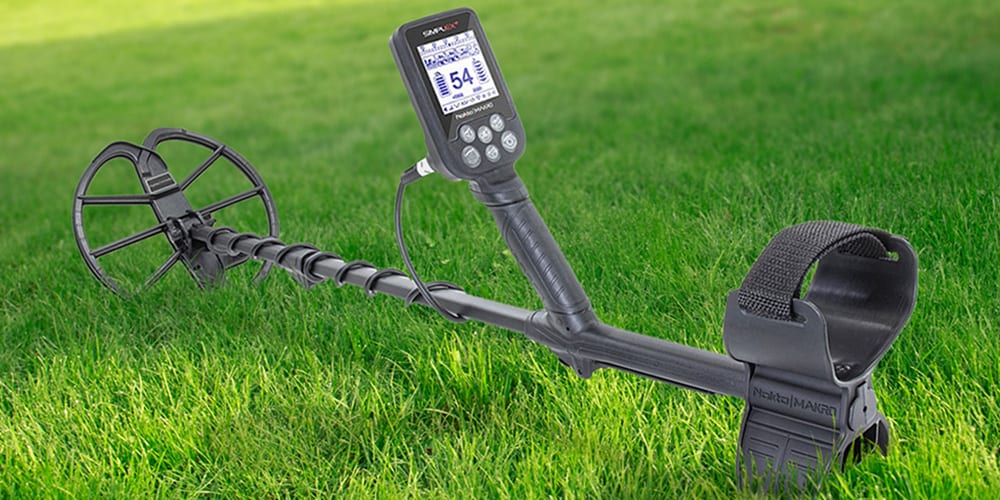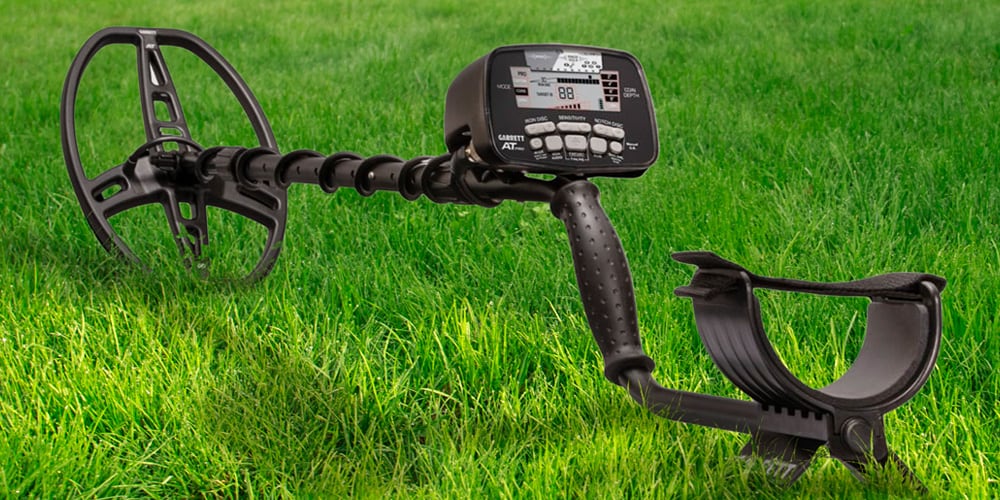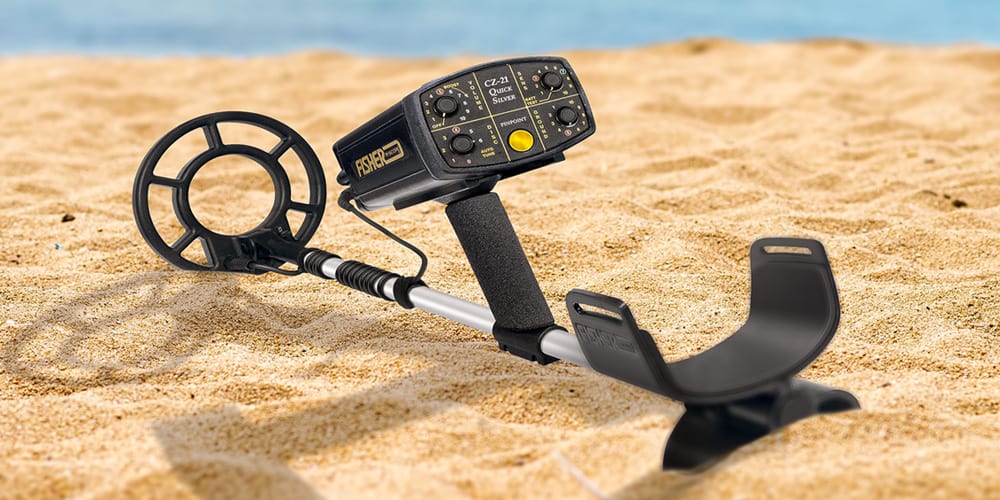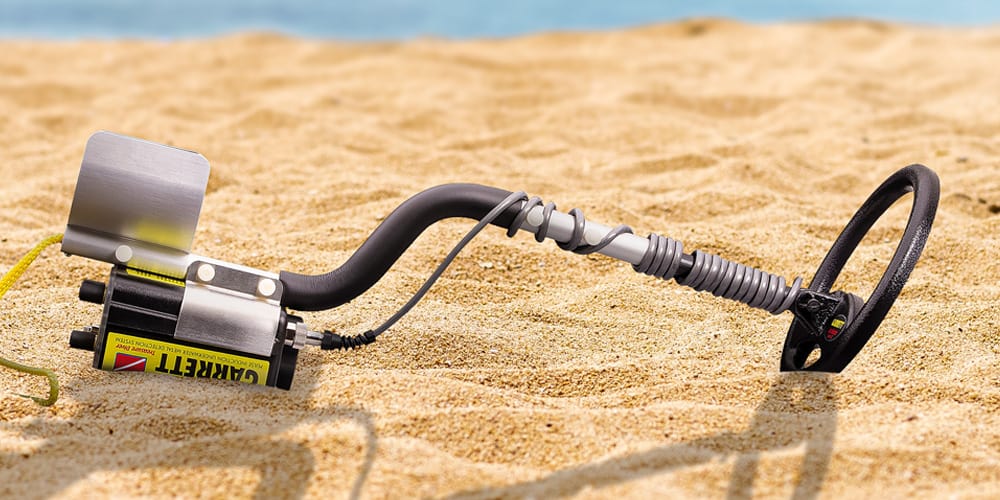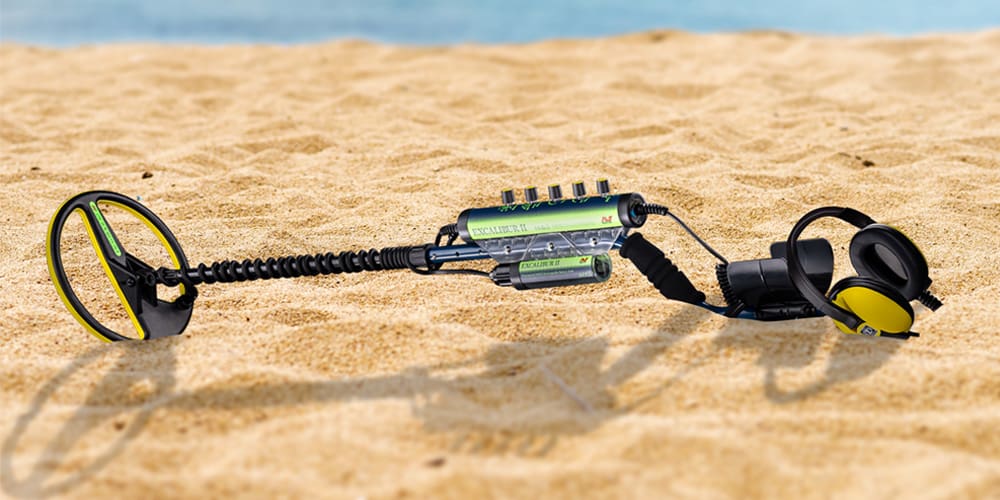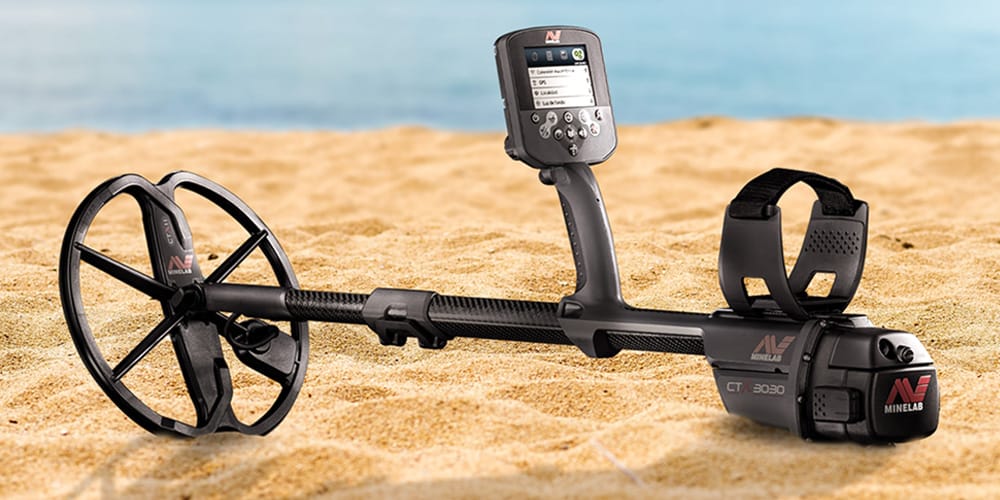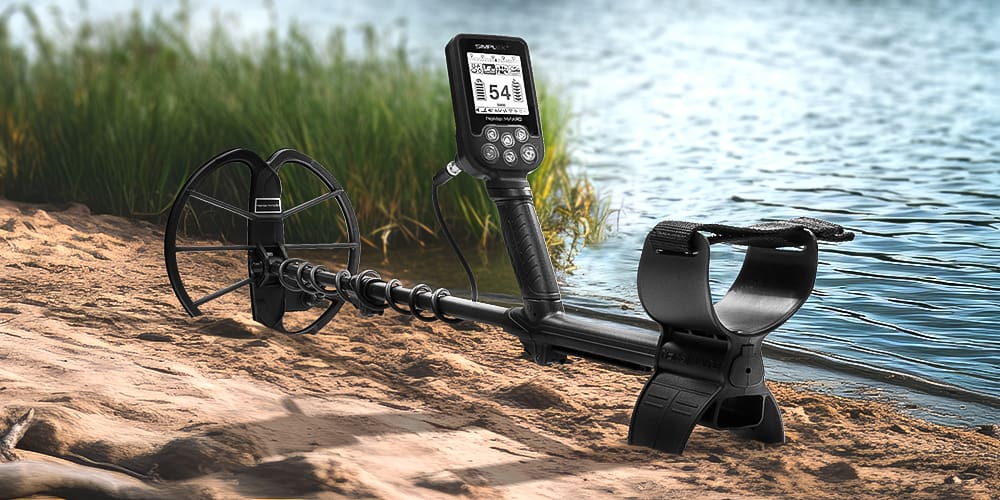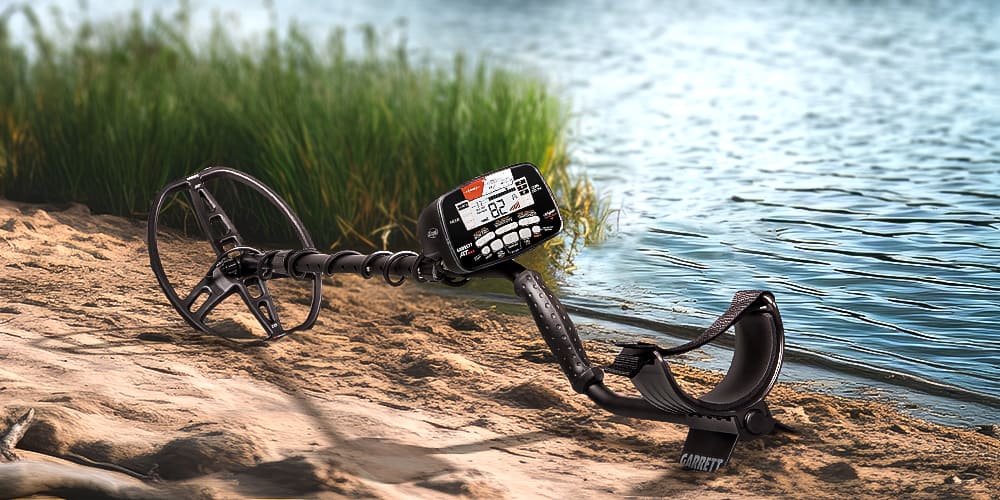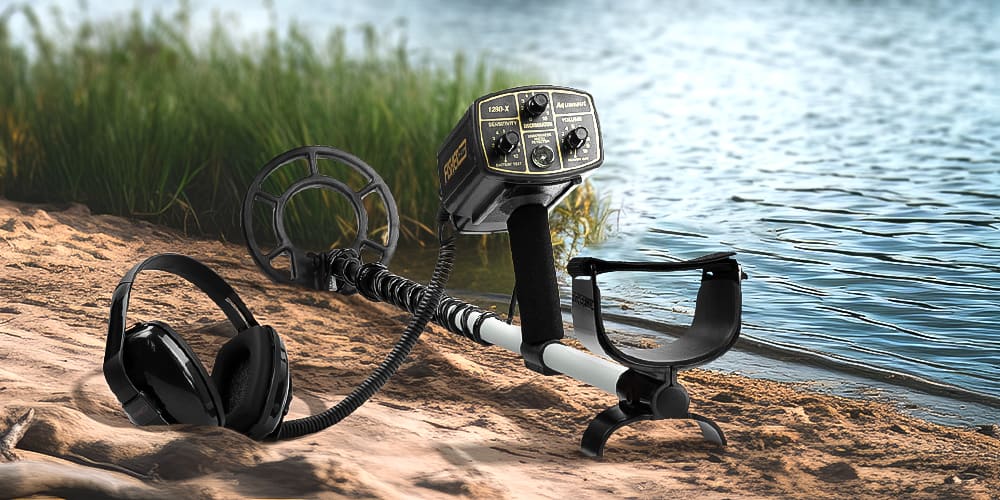Are you looking for the best metal detector for your treasure-hunting adventures? With so many options available, picking the right detector can seem daunting. Various factors influence the overall performance, from operating frequency and ground balance to search coils and waterproof capabilities. Whether you’re metal detecting to find coins, jewelry, relics, or gold, we’ve got a recommendation that fits your needs.
Best Metal Detectors in 2024
- Garrett AT Pro: our top pick overall
- Nokta Makro Simplex: our pick for entry-level users
- Fisher F22: runner-up for entry-level users
- Minelab Equinox 800: our pick for relic hunting
- Minelab Excalibur II: our pick for saltwater beach hunting
- Minelab CTX 3030: our pick for high-end features
Jump to…
Entry-level metal detectors
| Photo | Metal Detector | Our pick for… | Price |
|---|---|---|---|
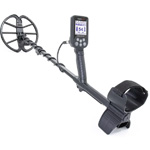 | Nokta Makro Simplex | Our top pick | Check Price |
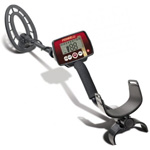 | Fisher F22 | Also recommended | Check Price |
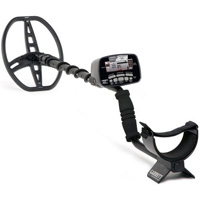 | Garrett AT Pro | High-end features | Check Price |
Nokta Makro Simplex Metal Detector
What we like:
- Mid-level detector performance for entry-level price
- Powerful DD coil
- Fully submersible to 10 ft
- Built-in rechargeable battery
- Wireless audio when used with compatible headphones
What we don’t like
- Controls not as basic as other entry-level detectors
Fisher F22 Metal Detector
What we like:
- Weatherproof
- Iron Audio
- Fast Recovery (Processing) Speed
- Digital Target ID
- Lighter, easier to use
- 5 Year Warranty
What we don’t like
- No adjustable ground balance
The F22 is a great budget pick. We rank the F22 #1 in our list of the best metal detectors under $300.
Garrett AT Pro Metal Detector
What we like:
- Fully waterproof and submersible to 10 ft
- Manual and auto ground balance
- Proportional audio
- Iron audio
What we don’t like:
- Underwater headphones sold separately
Relic hunting metal detectors
| Photo | Metal Detector | Our pick for… | Price |
|---|---|---|---|
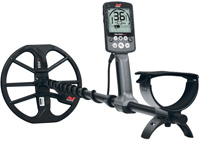 | Minelab Equinox 800 | Our top pick | Check Price |
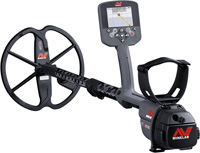 | Minelab CTX 3030 | High-end features | Check Price |
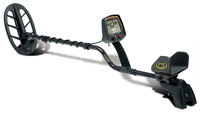 | Fisher F75 LTD | Advanced users | Check Price |
Minelab Equinox 800 Metal Detector
What we like:
- All-terrain detector
- Fully submersible up to 10ft (or 3 meters)
- Multi-frequency
- Wireless headphone capability
- Switch between frequencies based on your needs
- Weighs under 3lbs
What we don’t like:
- Included headphones aren’t waterproof
Minelab CTX 3030 Metal Detector
What we like:
- Superior discrimination settings and target ID
- Don’t need to buy separate land machine
- Lots of coils available
- LCD display
- Fully submerisble
- Full-color display
What we don’t like:
- Price
- Can’t be used for diving
Fisher F75 LTD Metal Detector
What we like:
- More search coil options
- 65 tone ID’s vs the T2’s 6
- Static all-metal mode
- Boost mode for enhanced sensitivity and depth
- Cache mode for deep, large objects
What we don’t like:
- Price
Waterproof PI metal detectors
| Photo | Metal detector | Our pick for… | Price |
|---|---|---|---|
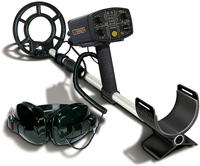 | Fisher CZ-21 | Top pick | Check Price |
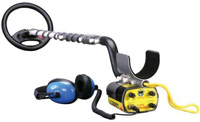 | Garrett Sea Hunter | Also recommended | Check Price |
Fisher CZ-21 Metal Detector
What we like:
- Fast response time
- Audio boost mode
- Pinpoint button
- Easy to hip mount
- Clear tone on deep, faint signals
What we don’t like:
- No threshold adjustment
- Concentric coil
Garrett Sea Hunter Metal Detector
What we like:
- Interchangeable coils and headphones
- Has large 10×14 accessory coil
- Independently sealed battery compartment
- Pulse Delay for heavy iron beaches
What we don’t like:
- No volume control
Waterproof multi-frequency metal detectors
| Photo | Metal Detector | Our pick for… | Price |
|---|---|---|---|
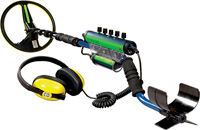 | Minelab Excalibur II | Saltwater-only | Check Price |
 | Minelab CTX 3030 | Most versatile | Check Price |
Minelab Excalibur II Metal Detector
What we like:
- Excellent iron discrimination
- Multiple frequency machine that can also be used for diving
- Very accurate tone ID
- Submersible to 200 ft
What we don’t like:
- Iron signals null delay can make you miss good targets
- Hardwired headphones
- Requires additional kit to hip mount
- No tone on deep, faint signals. Just threshold change.
Minelab CTX 3030 Metal Detector
What we like:
- Superior discrimination and target ID
- Don’t need to buy separate land machine
- Lots of coils available
- LCD display
- Digital Target ID
What we don’t like:
- Price
- Can’t be used for diving
Freshwater metal detector
| Photo | Metal Detector | Our pick for… | Price |
|---|---|---|---|
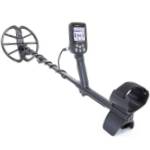 | Nokta Simplex+ | Budget pick | Check Price |
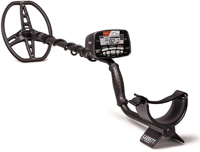 | Garrett AT Max | Intermediate | Check Price |
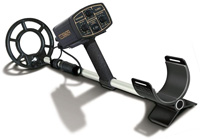 | Fisher 1280x | Water-only | Check Price |
Nokta Simplex+
What we like:
- Affordable and user-friendly
- Fully submersible up to 3 meters (10 feet)
- Built-in wireless module for seamless headphone connectivity
- Vibration mode for underwater detecting and noisy environments
- 12-hour rechargeable battery life
What we don’t like:
- Limited depth capabilities compared to higher-end models
- Less refined discrimination
Garrett AT Max Metal Detector
What we like:
- Can also be used for gold prospecting
- Better ground balancing options than AT Pro
- “True All Metal” mode
- Wireless headphones included
What we don’t like:
- Waterproof headphones sold separately
- Single-frequency
Fisher 1280x Metal Detector
What we like:
- Fully submersible to 250 ft
- Volume control
- 75+ hours battery life
- Low 2.4 kHz freq. which is great for coins
What we don’t like:
- No LCD display
- Not ideal for relic hunting or gold prospecting
Kids
All the same rules above still apply when shopping for children. The only real difference is going to be weight and probably budget. Depending on the age of your child, you might want to start with a detector that’s not super heavy. You may also want to get a machine that’s relatively easy to use with not a lot of settings. Stick to the basics.
For young treasure hunters, I typically recommend starting out with Bounty Hunter. Read our complete guide to choosing the best metal detector for kids. You may also be interested in the best metal detectors under $200.
Buyer’s Guide
This buying guide will explain what to look for when choosing your first metal detector. It’s meant to take the guesswork out of your buying decision. But first, some hard truth. There is no universal “best” detector. The question you should be asking is, “what is the best detector for the type of hunting I want to do, where I live, my experience, and my budget.”
User Skill Level
User skill level is crucial in selecting a metal detector. Beginners should opt for easy-to-use detectors in the $150-300 range, as complicated models may cause frustration. All detectors can find metal, but advanced features like adjustable threshold, custom search modes, and GPS functionality increase their complexity and cost. Detectors below $150 are considered toys and should be avoided.
Price
Price can be a significant consideration, particularly for those new to metal detecting and unsure of their level of interest. It’s not always feasible to invest $800 in a hobby that may not be a long-term passion. Typically, beginners spend between $150 and $300 on their first metal detector, which provides sufficient functionality to pique their interest and foster a deeper appreciation for the hobby.
Application & Intended Use
The type of hunting you plan on doing makes a major difference in what machine you buy. Manufacturers design most detectors as all-around detectors for coins, jewelry, and relics. However, there are also special machines for different uses.
Coin metal detectors are the most popular type of machine. Avoid high-frequency detectors designed for gold prospecting and ensure you stay below 15 kHz for optimal coin detection. Higher frequencies result in less depth for coin-sized targets. Steer clear of pulse induction (PI) machines, which are better suited for saltwater hunting and gold prospecting. For beginners, a single-frequency VLF detector is recommended for general coin and jewelry hunting.
Relic hunting metal detectors can be accomplished with most all-around machines. For a more advanced option, consider features such as a large DD search coil, slightly higher frequency (10-20 kHz), adjustable threshold, Iron Audio, and both manual and auto ground balance. These enhancements optimize performance for relic hunting.
Saltwater beach metal detectors require a special features if detecting in wet sand, surf, or water. A single-frequency detector is insufficient; instead, choose either a PI or multi-frequency machine. PI and multi-frequency detectors have their pros and cons, but both offer better depth and performance in saltwater environments than single-frequency devices. Dry sand hunting on saltwater beaches does not require a specialty machine. For more details, see our guide on the best metal detectors for the beach.
Freshwater metal detectors are comparatively simpler to navigate. When selecting a detector for this environment, ensure it is fully submersible to withstand underwater conditions. Additionally, choose a machine with good discrimination to accurately identify targets and avoid unwanted trash items. These two factors are essential for successful freshwater metal detecting.
Gold prospecting metal detectors can range from $500 all the way up to $10,000. Most of these machines will be PI and should be used in areas where gold is known to be found. If you want the best gold prospecting detector, go with a Minelab. They can’t be beaten.
Detection Technology
There are a few types of metal detectors you should familiarize yourself with when choosing which detector to buy.
- Very low frequency (VLF) is the technology built into most detectors – pretty much any machine under $1,000. These are signal frequency machines used for coin, jewelry, and relic hunting. If you’re just starting out, get yourself a VLF.
- Pulse induction (PI) is a technology used in specialty machines for areas of high mineralization – i.e., saltwater beaches and gold country. These machines will punch through ground minerals like salt and iron and will report on all metal objects without the ability to discriminate.
- Multiple frequency (MF) technology detectors typically go for over $1,000 and are most commonly found in the high-end Minelab detectors. These are best if you’re serious about metal detecting and have the budget to back it up. They’re also great for doing both saltwater and all-around detecting without having to buy two machines.
Key Technology Features Explained
In this section, we’ll cover some essential tech terms related to metal detectors, helping you understand what they mean and how they impact your buying decision.
- Operating Frequency: The frequency at which your metal detector emits signals, affecting the depth and sensitivity of the machine.
- Sensitivity: The ability of your metal detector to pick up signals from targets, with higher sensitivity allowing detection of smaller or deeper targets.
- Discrimination: The feature that allows your metal detector to differentiate between different types of metal objects, such as trash or valuable targets, allowing for more efficient and effective treasure hunting.
- Ground Balance: The ability of your metal detector to adjust for mineralization and ground conditions, reducing interference and false signals for improved target detection.
- Threshold: The continuous hum or sound heard in the background of your metal detector, which can be adjusted for optimal target detection and reduction of background noise.
Search Coils
The stock coil that comes stock with your detector is another important thing to consider. There are a few points you should consider when choosing a coil.
Coil size is vital when choosing a metal detector. Large coils offer more depth but process more ground signals in mineralized soil, causing falsing and missed targets. Smaller coils, however, provide comparable depth in mineralized ground, better target separation, and allow increased sensitivity, enabling detection of good targets among trash. Ground conditions and mineralization should be considered when selecting coil size.
Coil type configurations in most detectors include concentric and double-D (DD) coils. DD coils offer better detection depth in highly mineralized ground and can provide easier pinpointing (with practice), while concentric coils are generally more cost-effective and found in entry-level detectors. Mastering pinpointing with a DD coil, however, requires more experience.
Coil shape also plays a role in detector performance. Round coils are more common, providing a balanced search field and consistent detection depth. Elliptical coils, on the other hand, offer improved maneuverability in tight spaces or around obstacles, with a narrower search field that can improve target separation in trashy areas.
Accessory coils can be valuable for adapting to different detecting environments. Smaller “sniper coils” offer better maneuverability in tight spaces like playgrounds or rocky gold country, while larger coils suit expansive areas like beaches and farm fields. However, consider that larger coils are heavier, possibly requiring a harness for extended use. Ensure the manufacturer offers additional coil options for future needs.
Other Considerations
Detector weight varies, with some being lightweight and others quite heavy. If physical limitations, such as elbow or shoulder issues, are a concern, opt for a lighter detector. Brands like Fisher and Tesoro are known for their lightweight models. Mid and high-level machines like the AT Pro are heavier but manageable. When choosing your first detector, consider its weight, particularly if you plan on extended treasure hunting sessions.
Battery life refers to the duration a metal detector can function before its batteries need to be replaced or recharged. Factors that influence battery life include the type of batteries used, the device’s optimization, and the detector settings chosen by the user.
Battery types: Metal detectors typically utilize AA batteries for their power source. However, higher-end models may incorporate lithium battery packs, which can provide enhanced performance and reliability.
Search modes are discrimination patterns found in metal detectors that assist users in differentiating between valuable finds and unwanted items. Customizable search modes allow for improved target identification and a more tailored treasure hunting experience.
Audio output refers to the settings that control a metal detector’s sound, including volume adjustments. Audio output also encompasses the size and type of headphone jack, which is important for compatibility with a user’s preferred headphones.
Waterproofing describes the level of protection a metal detector offers against water exposure. Waterproofing can range from basic rain resistance to complete submersion capabilities, depending on the design and intended use of the detector.
Ergonomics mainly pertains to the balance between a detector’s weight and coil, which can impact user comfort and ease of use during extended treasure hunting sessions.
GPS integration: Advanced models may offer GPS functionality for location tracking and waypoint marking. This feature streamlines navigation, helping treasure hunters revisit productive spots and manage their search areas more effectively.
Accessories are important to consider when budgeting for a metal detector, especially for newcomers to the hobby. You may eventually need a pinpointer, headphones, digger, pouch, carry bag, and scoop (for beach hunting). However, be cautious of retailers who bundle low-quality accessories with their detectors, such as subpar pinpointers and diggers, which are commonly referred to as “dollar store accessories.”
Brand choice is essential in selecting a metal detector. Top options include Bounty Hunter, Fisher, Garrett, Minelab, Nokta Makro, Teknetics, and XP. Opting for models from these reputable brands guarantees quality and reliable customer support for a better metal detecting experience.
Warranty considerations are crucial when selecting a metal detector brand. Most brands offer warranties ranging from 2-5 years, while waterproof models often have shorter warranties (1-2 years). If purchasing a used detector, verify if the warranty is transferable, as some brands may not permit this.
LCD Screen vs. no screen: Experienced hunters often rely on sound, but an LCD screen (VDI) can provide valuable information, such as target depth, target ID, detector settings, and battery life. While some prefer detectors with screens, others find knob-based Tesoro-type detectors sufficient. Hybrid options, like the Fisher F5, offer both screens and knobs for versatile operation. Detectors without screens are known as “beep and dig” machines, as they lack a display to indicate detected items.
Additional research
YouTube Research: Once you have narrowed your choices down to two or three detectors, watch them in action on YouTube. There is nothing like seeing them and hearing the owners talk about them to give us a great idea of what the machine is like and how it works. YouTube features everything from consumer reviews to testing to actual hunting scenarios and everything in between.
Read reviews: It’s crucial to read reviews on the specific model you’re looking to buy. But take reviews and YouTube videos with a grain of salt, as negative feedback may result from users choosing the wrong detector for their needs. Factors like skill, budget, location, and intended use can significantly impact the suitability of a detector. For instance, the AT Pro may perform well in saltwater near the Gulf of Mexico but not in the more extreme conditions of the Atlantic or Pacific oceans. Similarly, entry-level detectors might struggle in areas with highly mineralized soil, like the Pacific Northwest.
Final thoughts
Metal detecting is a hobby you can grow into over time. There’s no need to buy the most expensive top-of-the-line detector right away and have no idea what you’re doing. Don’t overthink your first purchase. This article talks about many factors to consider, but it’s not intended to scare you away from your first purchase. The bottom line is to stick to your price point with one of the major brands, you really can’t go wrong. The best metal detector is the one that works best for your budget, skill-level, and intended use.
Our top picks
To recap, here are our top picks:
- Garrett AT Pro: our top pick overall
- Nokta Makro Simplex: our pick for entry-level users
- Fisher F22: runner-up for entry-level users
- Minelab Equinox 800: our pick for relic hunting
- Minelab Excalibur II: our pick for saltwater beach hunting
- Minelab CTX 3030: our pick for high-end features

